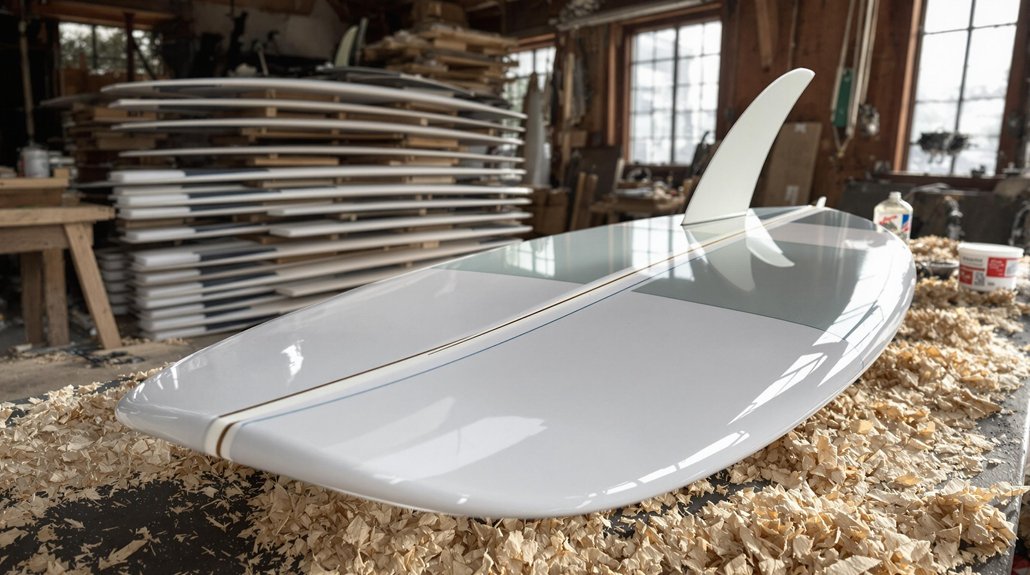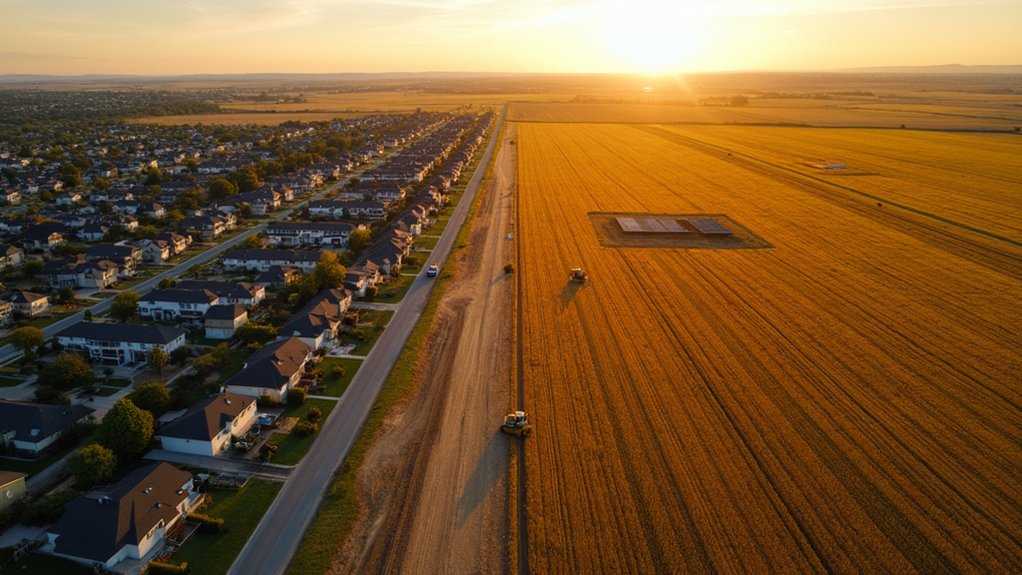Eco-surfboards are turning wind turbine trash into surfing treasure. Made from decommissioned turbine blades, these boards cut carbon footprints by 40% compared to traditional toxic foam-and-resin nightmares. They’re not just green gimmicks—they actually perform better, with enhanced flex and vibration absorption. Yeah, they cost more upfront, but last longer. Professional surfers are jumping on board, proving sustainability doesn’t mean sacrificing that perfect wave. The ocean might just thank you later.
While traditional surfboards have been environmental nightmares for decades, eco-surfboards are changing the game. Those classic foam and resin boards? Toxic as hell, both to make and to break down. But now, innovative companies are transforming decommissioned wind turbine blades into high-performance surf craft. Yeah, you read that right—from catching wind to catching waves.
The concept is brilliant in its simplicity. Take these massive fiberglass wind turbine blades, otherwise destined for landfills, and give them new life under surfers’ feet. The recycled EPS foam cores come with 25% post-consumer content, paired with bio-based epoxy resins containing up to 29% bio-carbon. Add some flax fiber cloth from the flaxseed plant, recycled fiberglass fins, and you’ve got yourself a legitimate eco-board. Environmental nightmare? Not anymore.
These boards aren’t just green gimmicks. They perform. Comparable strength and durability to traditional boards? Check. Enhanced flex patterns for improved responsiveness? You bet. Better vibration absorption in the water? Absolutely. The kicker? They actually maintain their liveliness and “pop” longer than conventional boards. So much for sacrificing performance for sustainability.
Performance without compromise—these eco-boards deliver the punch with better flex, feel, and longevity than their toxic counterparts.
The numbers don’t lie. Eco-surfboards reduce carbon footprints by 30-40% compared to their toxic predecessors. Less waste during manufacturing, lower toxicity, fewer VOC emissions. Each traditional surfboard contributes around 400 pounds of CO₂ to our atmosphere. Standard polyester boards generate nearly 10 pounds of waste material during production, which is almost double their weight. And when they eventually die? They’re easier to recycle or biodegrade. Full circle, baby.
The market’s responding, too. Professional surfers are backing them. Major brands are investing. Sure, they cost more upfront, but they last longer. Do the math.
Organizations like ECOBOARD Project verify these sustainable surfboards, offering Level One and Gold Level certifications to manufacturers who meet the strict requirements. It’s not just marketing—it’s measurable impact reduction. This approach mirrors the broader thermochemical conversion principles that have made biomass energy increasingly viable in other industries.
From turbine to tide, this transformation represents everything the surfing industry needs: innovation, performance, and environmental responsibility. Who knew saving the planet could actually make surfing better?








